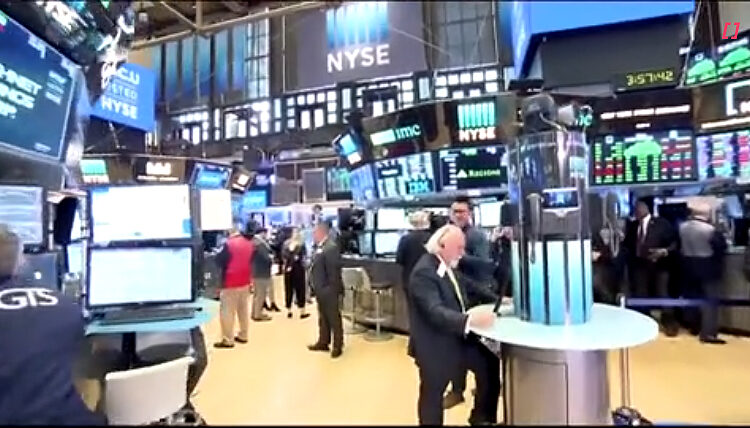
Another day, another bond market sell-off with fresh highs in global rates, although the net change in the US 10-year rate has been small, after some reversal. Higher risk appetite sees a recovery in US equities and a broadly weaker USD. The AUD has been the top performer, while the NZD has recovered to 0.5960.
Higher UK rates led a global bond market sell-off, with the 10-year Gilt up as much as 20bps to 4.56% before some order was restored to the market, now up 13bps for the day. Traders reported some cross-asset selling of gilts, as they had lagged the sell-off through September.
Higher UK rates flowed through into other markets, with the case for higher European yields aided by a renewed focus on budget deficits. Italy’s 10-year rate rose as much as 18bps to a fresh decade-high of 4.95% after the government raised its fiscal deficit targets (to 5.3% of GDP this year and 4.3% next year) and cut growth forecasts. This followed a move by France a day earlier to cut public spending only slightly in its proposed budget next year, leaving the deficit well above EU rules at 4.4% of GDP. EU rules that cap budget deficits at 3% of GDP were suspended during the pandemic but are due to go into force again next year.
Those market forces swamped the better news on inflation. German inflation fell to a two-year low and came in slightly below market expectations at 0.2% m/m and 4.3% y/y, the latter plunging from 6.4% due to base effects. Annual CPI inflation in Spain alsp undershot expectations at 3.2%, albeit up from 2.4%. The data, along with expectations that core inflation will continue to fall, support the ECB’s view that enough tightening might have been done this cycle. Germany’s 10-year rate is up 9bps on the day to 2.93%, after trading at a fresh 12-year high of 2.98%.
Higher European rates spilled over into the Treasuries market, with the 10-year rate up to a fresh high of 4.69% before the mood turned and the rate is now up only 2bps for the day at 4.62%, alongside a 6bps steepening, with the 2-year rate down 4bps.
US economic data were mixed. US Q2 GDP was unrevised at 2.1% but there was a significant revision in the composition, with consumer spending up an annualised 0.8%, its weakest pace in a year, and revised down from 1.7%, offset by an upgrade to business investment. Initial jobless claims remained low, rising just 2k to 204k. Pending home sales, a leading indicator of existing home sales, plunged 7.1% m/m in August, a much greater fall than expected and raising some question marks about the health of the housing market in the face of higher mortgage rates.
The turnaround in the bond market saw equities bounce higher. After trading sideways, the S&P500 is currently up ½%, alongside a modest improvement in risk sentiment. In positive news, Bloomberg reports on hints of a compromise between the auto workers’ union and car manufacturers that bring the parties closer together, the union reducing demands on a pay rise from the initial 40% to 30%. The WSJ reports that US and China talks are gaining momentum, paving the way for President Xi to visit President Biden in the US, alongside other steps to improve relations.
In currency markets, the USD has been broadly weaker, reflecting better risk sentiment and perhaps a sign that buying pressure was exhausted, with the RSI technical indicator as high as 78 indicative of an overbought USD. The DXY index is currently down 0.4%. The AUD has been the best performer over the past 24 hours, moving in sync with a stronger yuan. USD/CNH has fallen to 7.2960 while the AUD has recovered to 0.6420. This sees NZD/AUD down to 0.9285 even as the NZD has strengthened to 0.5960, up 0.9% from this time yesterday.
Apart from a fall against the AUD, NZD crosses are all higher, reflecting the more modest gains in other majors against the USD. NZD/JPY has broken up through 89, with the July high of 89.7 increasingly under threat.
The domestic rates market outperformed on a cross market basis yesterday, with a more modest lift in rates than seen in the US or Australia. Higher rates from the open via global forces saw the government bond tender well supported and rates fell into the close. The curve was steeper and the 10-year NZGB closed the day up 5bps to 5.23%, a fresh closing high for the cycle. Swap rates were up 2-4bps across the curve. The ANZ business outlook survey didn’t move the market, with the survey showing insignificant movements in activity indicators, and with mixed pricing indicators – pricing intentions nudging higher and inflation expectations nudging lower.
In the day ahead the economic calendar is full. Fed Chair Powell will be on the wires form 9am reiterating the recent policy update. Key releases include China Caixin PMI data, ahead of the official PMIs on Saturday, euro area CPI and the US PCE deflators. The latter is expected to show the core rate steady at 0.2% m/m and the annual rate falling from 4.2% to 3.9% yoy.



